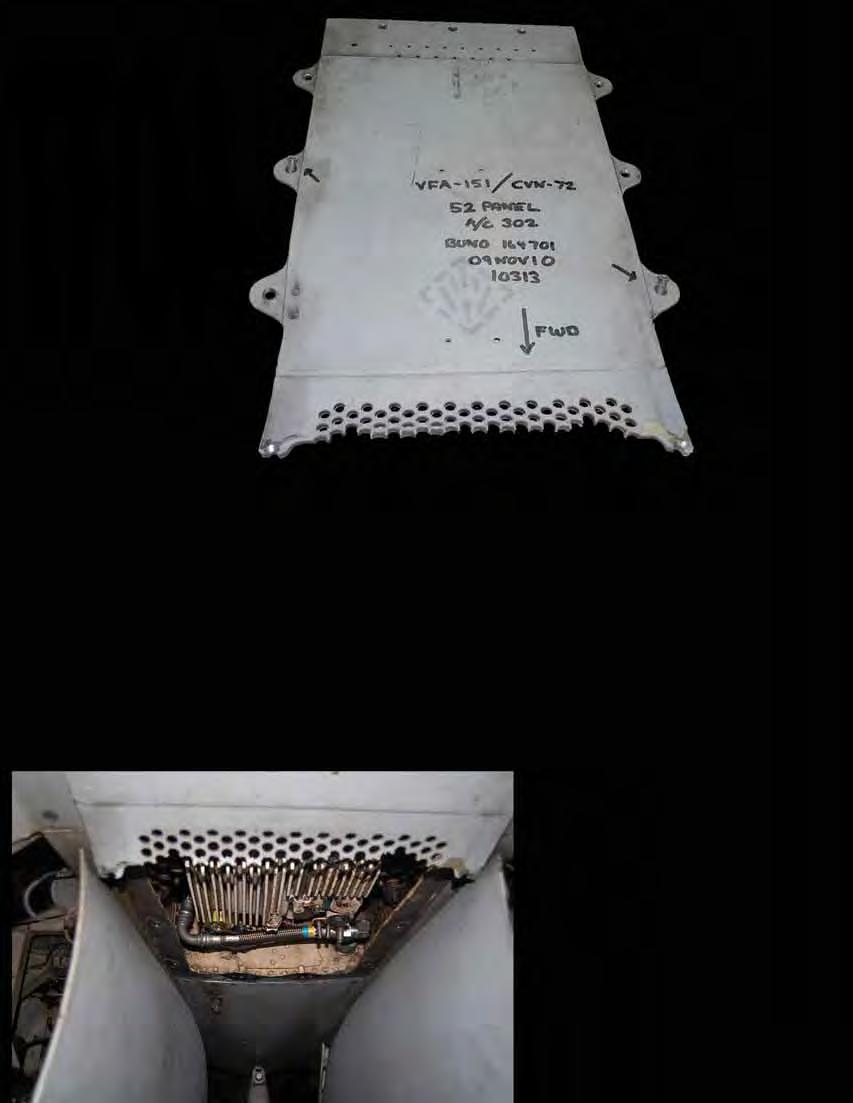
3 minute read
Tacking Leads to TFOA
By ATCS Kevin Hughes
It all began when we had trouble starting the auxiliary power unit (APU) on aircraft 302. Troubleshooters quickly found the problem component: a faulty thermocouple. Trying to speed up the process, Maintenance Control directed a daily/ turnaround inspection in preparation for a low-power turn.
Our power-plant maintenance team opened up the access panel to the APU, removed the thermocouple, and placed a new one on order. Within the hour a new thermocouple was installed and the panel was “tacked” back up with two fasteners. A low-power turn was scheduled for the following morning. The same morning, a daily fastener inspection was done. No defects were found, and the MAF was signed off
The next morning, another fastener inspection was done. No discrepancies were identified, despite the fact that the APU panel was “secured” with only two fasteners. The inspection was signed off, and the aircraft awaited a turn to check the thermocouple.
Because of the heavy traffic flow on the flight deck, the aircraft was finally spotted for the low-power turn after a long delay. The APU and thermocouple were operationally checked and everything looked good. But was it?
CDIs are the last set of eyes on a job. They ensure a job is completed correctly. Ours failed when he took the word of the turn operator, who claimed everything checked 4.0. The CDI then signed off the MAF despite the fact he hadn’t inspected the work. In this case, his weren’t the last set of eyes to inspect the aircraft.
Because of the long delay with the low-power turn, Maintenance Control had the line do a turnaround inspection. The PC doing the inspection noticed the panel was only tacked in place with two fasteners, but he assumed that work was still being done on the jet and did not document the discrepancy, nor did he tell the deck chief about the missing fasteners.
For the third time a daily fastener inspection was completed; this time on the now “up” aircraft. Same results—no discrepancies. That afternoon, Maintenance Control requested aircraft 302 “up-traffic” from the hangar to meet our flight schedule requirements. My Maintenance Chief was at chow, so I screened the books to ensure the aircraft was “safe for flight.” All signoffs were complete, and the daily/turnaround inspections were current… well, sort of. I noticed the “daily” was two days old, and had mentioned to my Maintenance Chief that, although
acceptable under the NAMP, letting a daily lag like this was not a good business practice. We should have done another daily with the latest turnaround inspection. Regardless, I still released the jet “safe for flight.”
The pilot then stepped to the jet, pre-flighted it, and unknowingly went flying with the panel barely secured to the jet. The aircraft recovered 1.5 hours later in an “up” status.
Maintainers completed a turnaround inspection and the aircraft was manned up for yet another event. During final checks for that event, one of the troubleshooters discovered that half of the APU panel was missing.
The mistakes were shocking. Retracing our steps, we found that four maintainers, two plane captains, four CDIs, and two final checkers all missed the APU panel sans fasteners. Also, no CDI in-process inspections were documented on the MAF, nor was there any documentation on the status of the panel.
Although Maintenance Control did everything right according to regulation, more vigilance on our (my) part could have prevented this mishap. As controllers, we need to ensure that when we assign daily and turnaround inspections, we are doing so after all major maintenance actions have been completed. COMNAVAIRFORINST 4790.2A states: “In the event maintenance, other than servicing, must be performed after the daily inspection or turnaround inspection, Maintenance Control shall determine if a complete daily, turnaround or portion thereof is required.” In this case, when I noticed the daily had been done before the maintenance was done, a little extra effort on my part (i.e. assigning a new daily inspection) would have put a fresh set of eyes on the jet. As a result of this incident a number of personnel lost their quals, and our squadron held a brief all-CDI maintenance stand-down. As with most maintenance malpractice incidents, we learned the hard way the value of proper procedures and documentation.

Senior Chief Hughes works in Maintenance Control at VFA-151.










